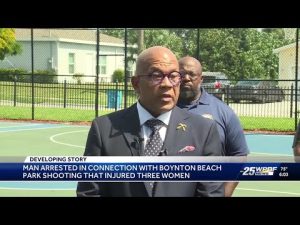#NNPA BlackPress
What Do Standardized Tests Say About College Achievement?
SACRAMENTO OBSERVER — The SAT is one of the longest-standing standardized college admissions in the United States. Along with its counterpart, the ACT, these tests have been at the center of heated debates. Some say these tests only serve to reinforce racial inequities in education. Supporters of SAT and ACT scores say that they help universities understand how likely students will be to succeed in college by predicting grades, chances of graduation, and success after college.


By Annie Lennon | Stacker | The Sacramento Observer
(Stacker) – Every year, millions of high schoolers prepare for the arduous process of college admissions. Most will take either the SAT or the ACT, multi-hour examinations that can feel like the climax of an epic battle students have been waging ever since they entered the halls of formal education.
But is it a battle worth fighting in the first place?
The SAT is one of the longest-standing standardized college admissions in the United States. Along with its counterpart, the ACT, these tests have been at the center of heated debates. Some say these tests only serve to reinforce racial inequities in education. Supporters of SAT and ACT scores say that they help universities understand how likely students will be to succeed in college by predicting grades, chances of graduation, and success after college.
Numerade analyzed academic research to see what standardized test scores say about academic success.
The SAT contains two sections: math and evidence-based reading and writing. Most answers are multiple-choice, but some math questions require entering an answer instead of selecting one. An optional SAT essay was discontinued in 2021, however, a small number of schools still choose to offer it.
The ACT is a little different in that it contains four sections: English, math, reading, and science. All of its questions are multiple-choice, and it has an optional writing section that may be required by some universities.

Numerade
Standardized testing may be better predictors than generally supposed
In a study published in January 2024, Harvard-based research initiative Opportunity Insights, along with researchers from Brown University, Dartmouth College, and the National Bureau of Economic Research, investigated the value of standardized test scores in the college admission process. They found that SAT and ACT scores—but, surprisingly, not high school GPA scores—can better predict academic success in college. “Test scores have vastly more predictive power than is commonly understood in the popular debate,” John Friedman, the lead author of the study, told The New York Times.
The study looked at students who were admitted to all eight Ivy League colleges plus Stanford, Massachusetts Institute of Technology, Duke, and the University of Chicago between 2017 and 2022. It found that students with perfect scores on the SAT or ACT, 1600 or 36 respectively, achieved a 0.43 point-higher first-year college GPA than students who earned SAT and ACT scores of 1200 and 25. However, students with a perfect (scaled) GPA of 4.0 in high school achieve less than a 0.1-point higher GPA in their first year of college than students with a high school GPA of 3.2.
Some have raised concerns that these standardized test scores may not show the full picture. They worry these tests could be biased against students who aren’t able to afford the additional cost of tutors or other resources that can help them prepare for college, a question the Opportunity Insights paper also answered. Controlling for family income, race, gender, and legacy status, the study found that there was no evidence that students from higher-resource backgrounds performed better than peers from lower-resource backgrounds. In fact, their college GPAs were practically identical.
All together, the researchers concluded that standardized test scores may help highly selective colleges provide upward mobility and accept students from a wide range of backgrounds.

Numerade
A history of imperfectly measuring potential
Standardized tests emerged alongside the growth of publicly funded education in the mid-1800s. As more children entered the education system, oral examinations were replaced with standardized written tests.
The first standardized college entrance exams in the U.S. appeared with the College Entrance Examination Board in 1900, formed from 12 colleges, including Harvard University and Columbia University. SATs were introduced less than a century ago in 1926, and ACTs came in 1959. Both became staples of the college application process.
In recent years, however, some have started to doubt the efficacy of standardized tests for college applications. In May 2020, for example, the University of California decided to drop SAT/ACT scores to allow for fairer evaluation of college applications.
The COVID-19 pandemic spurred other universities to reconsider their SAT/ACT policies too as the testing bodies were forced to close temporarily. During this time, many colleges made test scores optional.
Since then, however, some colleges such as Dartmouth, Yale, and Brown have announced that they will once again require applications to include standardized test scores. Other colleges however, such as the University of California system, have declined to even consider these scores, while others like Emory and Vanderbilt have extended test-optional policies.
Whether or not colleges decide to include standardized test scores in their admissions process depends on views about how well they help identify the most academically prepared students.
Previous research published in October 2023 from Opportunity Insights shows that students from less advantaged backgrounds receive lower standardized test scores on average and are less likely to undergo testing than peers from higher-income families. Only a quarter of children from the bottom 20% of income distribution take the SAT or ACT versus about 80% for those in higher-income families. For those who do take the test, only 2.5% of those in the lower-income bracket score 1300 or higher versus 17% for those in the top 20%.
With the findings from the latter Opportunity Insights research, the SAT and ACT may easily be dismissed as tests only for the wealthy. However, economist David Deming, who worked on the paper, cautions against oversimplifying these exams as “wealth tests.” Doing so overlooks their capability to help administrators discover the potential in candidates regardless of background.
He argued that if SATs or ACTs were removed altogether, it might disadvantage lower-income students even more. Deming told the Harvard Gazette, “If you get rid of the SAT, as many colleges have done, what you have left is things that are also related to wealth, probably even more so. Whether you can write a persuasive college essay, whether you can have the kinds of experiences that give you high ratings for extracurricular activities and leadership; those things are incredibly related to wealth.”
Story editing by Carren Jao. Additional editing by Kelly Glass. Copy editing by Tim Bruns.
This story originally appeared on Numerade and was produced and distributed in partnership with Stacker Studio.
#NNPA BlackPress
LIHEAP Funds Released After Weeks of Delay as States and the District Rush to Protect Households from the Cold
BLACKPRESSUSA NEWSWIRE — The federal government has released $3.6 billion in home heating assistance after a delay that left states preparing for the start of winter without the program’s annual funding.

By Stacy M. Brown
Black Press USA Senior National Correspondent
The federal government has released $3.6 billion in home heating assistance after a delay that left states preparing for the start of winter without the program’s annual funding. The Low-Income Home Energy Assistance Program, known as LIHEAP, helps eligible households pay heating and cooling bills. The release follows a shutdown that stretched 43 days and pushed agencies across the country to warn families of possible disruptions.
State officials in Minnesota, Kansas, New York, and Pennsylvania had already issued alerts that the delay could slow the processing of applications or force families to wait until December for help. In Pennsylvania, more than 300,000 households depend on the program each year. Minnesota officials noted that older adults, young children, and people with disabilities face the highest risk as temperatures fall.
The delay also raised concerns among advocates who track household debt tied to rising utility costs. National Energy Assistance Directors Association Executive Director Mark Wolfe said the funds were “essential and long overdue” and added that high arrearages and increased energy prices have strained families seeking help.
Some states faced additional pressure when other services were affected by the shutdown. According to data reviewed by national energy advocates, roughly 68 percent of LIHEAP households also receive nutrition assistance, and the freeze in multiple programs increased the financial burden on low-income residents. Wolfe said families were placed in “an even more precarious situation than usual” as the shutdown stretched into November.
In Maryland, lawmakers urged the Trump administration to release funds after the state recorded its first cold-related death of the season. The Maryland Department of Health reported that a man in his 30s was found outdoors in Frederick County when temperatures dropped. Last winter, the state documented 75 cold-related deaths, the highest number in five years. Rep Kweisi Mfume joined more than 100 House members calling for immediate federal action and said LIHEAP “is not a luxury” for the 100,000 Maryland households that rely on it. He added that seniors and veterans would be placed at risk if the program remained stalled.
Maryland Gov. Wes Moore used $10.1 million in state funds to keep benefits moving, but noted that states cannot routinely replace federal dollars. His administration said families that rely on medical equipment requiring electricity are particularly vulnerable.
The District of Columbia has already mapped out its FY26 LIHEAP structure in documents filed with the federal government. The District’s plan shows that heating assistance, cooling assistance, weatherization, and year-round crisis assistance operate from October 1 through September 30. The District allocates 50 percent of its LIHEAP funds to heating assistance, 10 percent to cooling, 13 percent to year-round crisis assistance, 15 percent to weatherization, and 10 percent to administrative costs. Two percent is used for services that help residents reduce energy needs, including education on reading utility bills and identifying energy waste.
The District’s plan lists a minimum LIHEAP benefit of $200 and a maximum of $1,800 for both heating and cooling assistance. Crisis benefits are provided separately and may reach up to $500 when needed to resolve an emergency. The plan states that a household is considered in crisis if it has been disconnected from energy service, if heating oil is at 5 percent or less of capacity, or if the household has at least $200 owed after the regular benefit is applied.
The District’s filing notes that LIHEAP staff conduct outreach through community meetings, senior housing sites, Advisory Neighborhood Commissions, social media, posters, and mass mailings. The plan confirms that LIHEAP applicants can apply in person, by mail, by email, or through a mobile-friendly online application and that physically disabled residents may request in-home visits.
As agencies nationwide begin distributing the newly released funds, states continue working through large volumes of applications. Wolfe said LIHEAP administrators “have been notified that the award letters have gone out and the states can begin to draw down the funds.”
#NNPA BlackPress
Seven Steps to Help Your Child Build Meaningful Connections
BLACKPRESSUSA NEWSWIRE — Swinging side by side with a friend on the playground. Sharing chalk over bright, colorful sidewalk drawings. Hiding behind a tree during a spirited game of hide-and-seek. These simple moments between children may seem small, but they matter more than we think

By Niyoka McCoy, Ed.D., Chief Learning Officer, Stride/K12
Swinging side by side with a friend on the playground. Sharing chalk over bright, colorful sidewalk drawings. Hiding behind a tree during a spirited game of hide-and-seek. These simple moments between children may seem small, but they matter more than we think: They lay the foundation for some of life’s most important skills.
Through everyday play, young children begin learning essential social and emotional skills like sharing, resolving conflicts, showing empathy, and managing their emotions. These social skills help shape emotional growth and set kids up for long-term success. Socialization in early childhood isn’t just a “nice-to-have”—it’s essential for development.
Yet today, many young children who haven’t yet started school aren’t getting enough consistent, meaningful interaction with peers. Research shows that there’s a decline in active free play and peer socialization when compared to previous generations.
There are many reasons for this. Children who are home with a parent during the day may spend most of their time with adults, limiting opportunities for peer play. Those in daycare or preschool may have restricted free play, and large classrooms can reduce supervision and social coaching. Some children live in rural areas, are homebound due to illness, have full schedules, or rely on screens to fill their playtime. And for some families, finding other families with young children to connect with isn’t easy.
While these challenges can feel significant, opportunities for connection still exist in every community. Families can take simple steps to help children build friendships, create a sense of belonging, and strengthen social skills. Here are some ideas to get started:
- Storytime sessions at libraries or local bookstores
- Community offerings such as parent-child workshops, art, music, gymnastics, swimming, or sports programs
- Weekly events at children’s museums, which may include art projects, music workshops, or science experiments
- Outdoor exploration, where kids can play with peers
- Local parenting groups that organize playdates and group activities
- Volunteer opportunities where children can participate, such as pet adoption events or packing meals at a food bank
- Classes for kids at local businesses, including hardware, grocery, or craft stores
Some of these community activities are free or low-cost and give kids the chance to build friendships and practice social skills. Parents can also model positive social behavior by interacting with other parents and encouraging their children to play with their peers.
These may seem like small moments of connection, but they can have a powerful impact. Every time your child shares a toy, plays make-believe with peers, or races a friend down the slide, they’re not just playing—they’re learning the skills that build confidence, empathy, and lasting friendships. And it’s good for you, too. Creating intentional opportunities for play also helps you strengthen your own network of parents who can support one another as your children grow together.
#NNPA BlackPress
Seven Steps to Help Your Child Build Meaningful Connections
BLACKPRESSUSA NEWSWIRE — Swinging side by side with a friend on the playground. Sharing chalk over bright, colorful sidewalk drawings. Hiding behind a tree during a spirited game of hide-and-seek. These simple moments between children may seem small, but they matter more than we think

By Niyoka McCoy, Ed.D., Chief Learning Officer, Stride/K12
Swinging side by side with a friend on the playground. Sharing chalk over bright, colorful sidewalk drawings. Hiding behind a tree during a spirited game of hide-and-seek. These simple moments between children may seem small, but they matter more than we think: They lay the foundation for some of life’s most important skills.
Through everyday play, young children begin learning essential social and emotional skills like sharing, resolving conflicts, showing empathy, and managing their emotions. These social skills help shape emotional growth and set kids up for long-term success. Socialization in early childhood isn’t just a “nice-to-have”—it’s essential for development.
Yet today, many young children who haven’t yet started school aren’t getting enough consistent, meaningful interaction with peers. Research shows that there’s a decline in active free play and peer socialization when compared to previous generations.
There are many reasons for this. Children who are home with a parent during the day may spend most of their time with adults, limiting opportunities for peer play. Those in daycare or preschool may have restricted free play, and large classrooms can reduce supervision and social coaching. Some children live in rural areas, are homebound due to illness, have full schedules, or rely on screens to fill their playtime. And for some families, finding other families with young children to connect with isn’t easy.
While these challenges can feel significant, opportunities for connection still exist in every community. Families can take simple steps to help children build friendships, create a sense of belonging, and strengthen social skills. Here are some ideas to get started:
- Storytime sessions at libraries or local bookstores
- Community offerings such as parent-child workshops, art, music, gymnastics, swimming, or sports programs
- Weekly events at children’s museums, which may include art projects, music workshops, or science experiments
- Outdoor exploration, where kids can play with peers
- Local parenting groups that organize playdates and group activities
- Volunteer opportunities where children can participate, such as pet adoption events or packing meals at a food bank
- Classes for kids at local businesses, including hardware, grocery, or craft stores
Some of these community activities are free or low-cost and give kids the chance to build friendships and practice social skills. Parents can also model positive social behavior by interacting with other parents and encouraging their children to play with their peers.
These may seem like small moments of connection, but they can have a powerful impact. Every time your child shares a toy, plays make-believe with peers, or races a friend down the slide, they’re not just playing—they’re learning the skills that build confidence, empathy, and lasting friendships. And it’s good for you, too. Creating intentional opportunities for play also helps you strengthen your own network of parents who can support one another as your children grow together.
-

 Activism3 weeks ago
Activism3 weeks agoOakland Post: Week of November 12 – 18, 2025
-

 Activism4 weeks ago
Activism4 weeks agoOakland Post: Week of November 5 – 11, 2025
-

 Activism2 weeks ago
Activism2 weeks agoIN MEMORIAM: William ‘Bill’ Patterson, 94
-

 Activism3 weeks ago
Activism3 weeks agoHow Charles R. Drew University Navigated More Than $20 Million in Fed Cuts – Still Prioritizing Students and Community Health
-

 #NNPA BlackPress3 weeks ago
#NNPA BlackPress3 weeks agoThe Perfumed Hand of Hypocrisy: Trump Hosted Former Terror Suspect While America Condemns a Muslim Mayor
-

 #NNPA BlackPress3 weeks ago
#NNPA BlackPress3 weeks agoProtecting Pedophiles: The GOP’s Warped Crusade Against Its Own Lies
-

 Bay Area3 weeks ago
Bay Area3 weeks agoNo Justice in the Justice System
-

 #NNPA BlackPress4 weeks ago
#NNPA BlackPress4 weeks ago2026 Subaru Forester Wilderness Review: Everyday SUV With Extra Confidence





















































